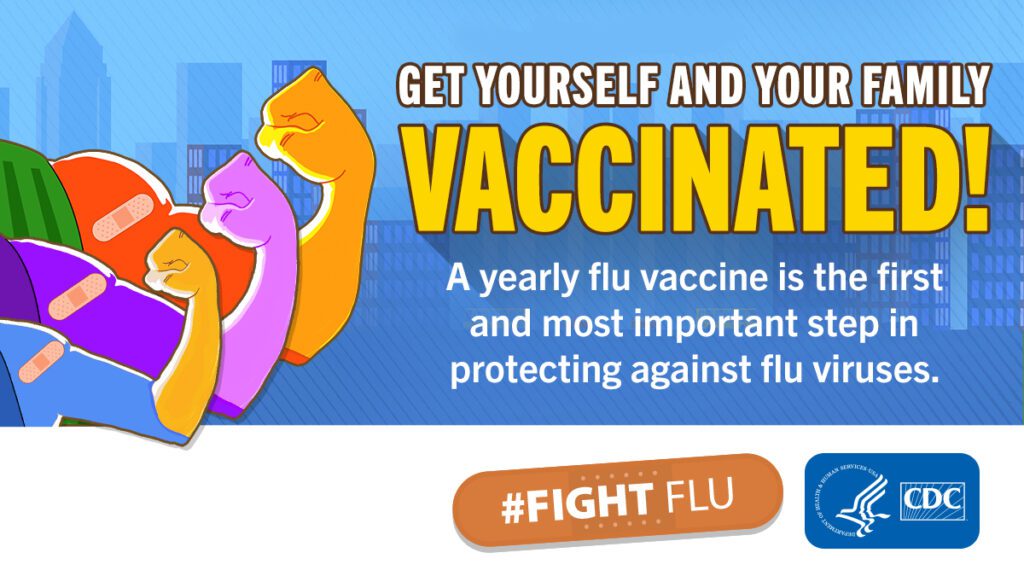National Influenza Vaccination Week is December 5–9 and serves as a reminder that it is never too late to get your flu vaccine—especially this year!
“Flu season typically peaks between December to March,” Ashesh Gandhi, PharmD, Regional Head of Medical Affairs, Americas, at CSL Seqirus, explained to Bio.News in October, “and what the [Centers for Disease Control and Prevention] recommends is that every individual six months and older get vaccinated in the months of September and October. However, vaccination should continue throughout the season, as long as influenza viruses are circulating.”
A tough flu season ahead
It’s no mystery this is a tough year for respiratory disease, so patients need all the protection they can get. Preliminary in-season estimates from the CDC’s Influenza Hospitalization Surveillance Network (FluSurv-NET) during the month of October projected the 2022 flu season would see:
- 1,600,000–3,700,000 flu illnesses,
- 760,000–1,800,000 flu medical visits,
- 13,000–28,000 flu hospitalizations, and
- 730–2,100 flu deaths.
These numbers are exacerbated by the added burden of other respiratory diseases.
“The CDC reported about a 14.7% positivity rate for respiratory syncytial virus (RSV)…as well as a 17.8% positivity rate for SARS-CoV-2, which we know is still circulating at a high burden,” Jamie Deeter, MS, Ph.D., and Scientific Strategy Lead Allison McMullen, Ph.D., senior scientific partners at Roche Diagnostics, recently told us.
“But there are other pathogens that are also co-circulating that present as respiratory symptoms. Patients have to take into account rhino-enterovirus, respiratory adenoviruses—which we have seen last week had a 6% positivity rate—as well as parainfluenza and metapneumovirus viruses. So it is important for patients to remember that these additional pathogens are out there as well.”


Vaccination options are available
Luckily, patients have a variety of options when it comes to what flu vaccine they use, based on their needs. As we reported earlier this fall, the CDC has a website explaining the eight different flu vaccine options:
- The flu shot (most common),
- The quadrivalent flu vaccines (like Flucelvax Quadrivalent),
- Flu vaccination by jet injector (Afluria Quadrivalent),
- The live attenuated Influenza vaccine [LAIV] (FluMist Quadrivalent),
- The high-dose flu vaccine (Fluzone High-Dose Quadrivalent),
- The adjuvanted flu vaccine (Fluad Quadrivalent vaccine),
- The recombinant flu vaccines (Flublok Quadrivalent)
What do I do if I get sick?
If you do, however, find yourself getting sick, it is important to remember that there are many options for testing and treatment, so you can know exactly what you have contracted and get the therapeutics you need to get better.
“There are PCR tests that are multiplex, meaning that they can test for more than just one pathogen,” Dr. Deeter told Bio.News. “And going in to get a multiplex PCR test like this is important due to these tests being more sensitive and due to the higher rate of co-circulating pathogens that we are seeing this year.”
As we reported, antiviral therapeutics have been as much of a game changer in the battle against pathogens as vaccines and testing have been. Therapeutics like Remdesivir and Paxlovid target COVID-19, while long-established therapeutics like Tamiflu, Relenza, Rapivab, and Xofluza target influenza. These therapeutics can be taken at home and are effective tools in reducing the number of days you are sick, reducing the potential number of days in the hospital, or eliminating the need for hospital visitation altogether.
Remember, during this tough flu season, the best thing you can do is get vaccinated. If you have not already, the time is now!




